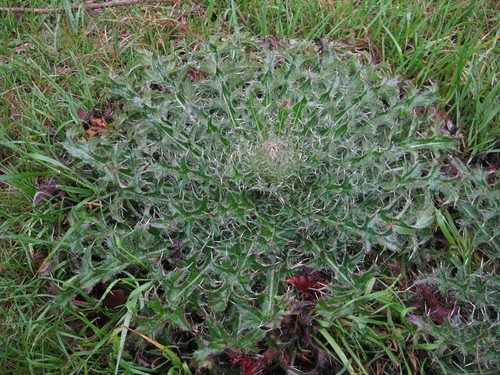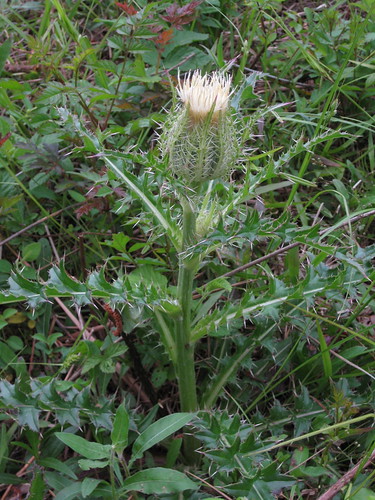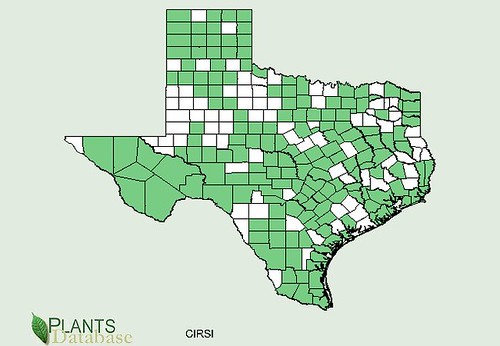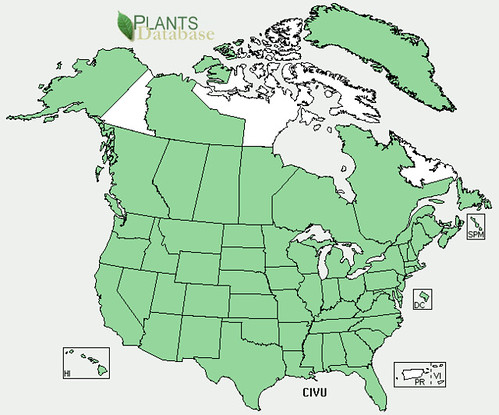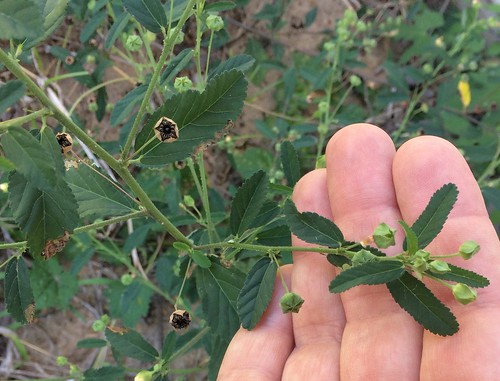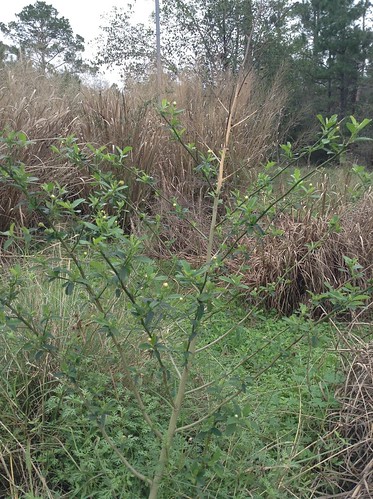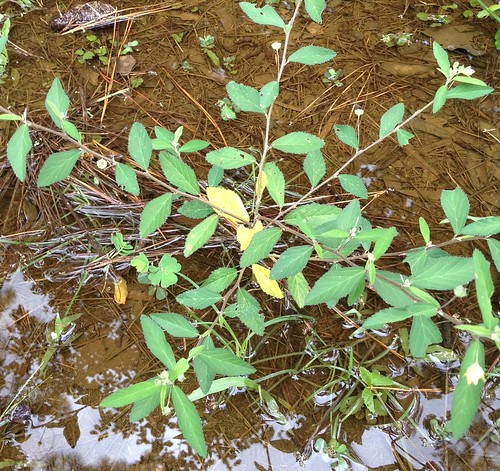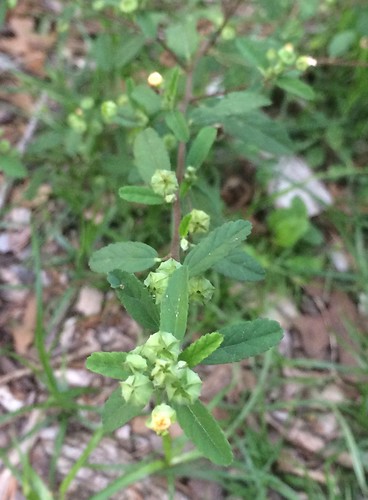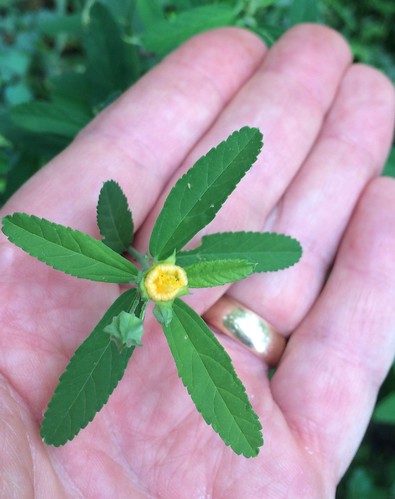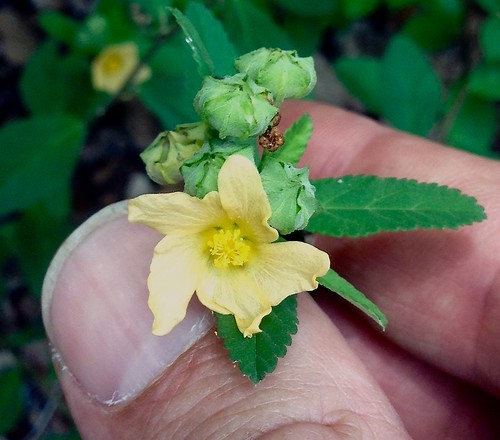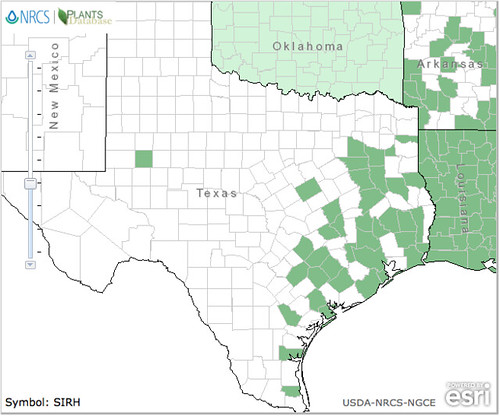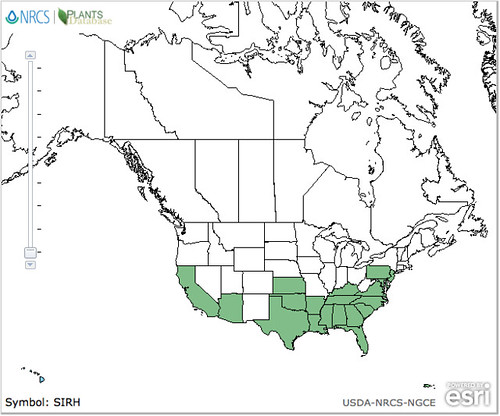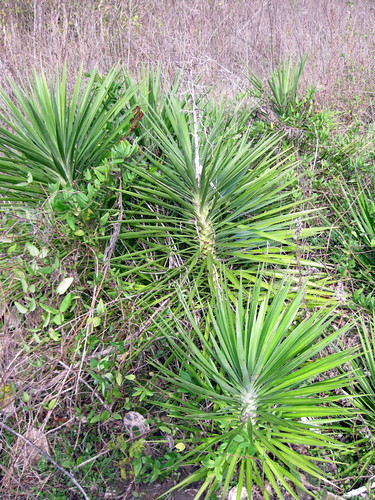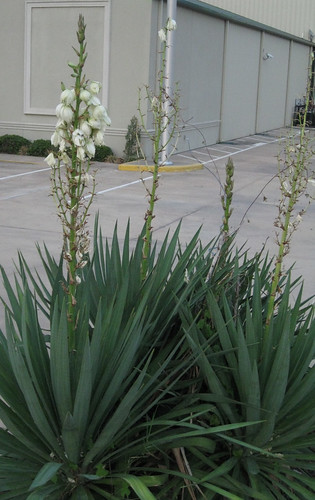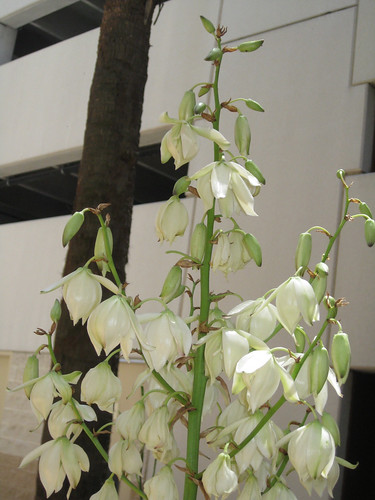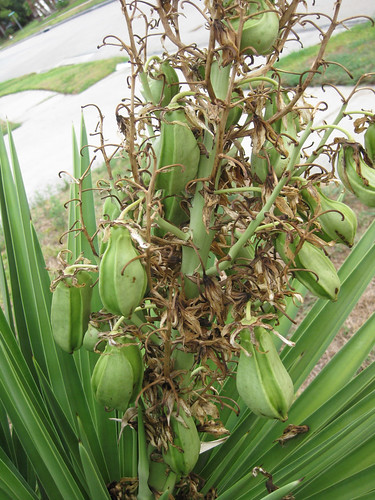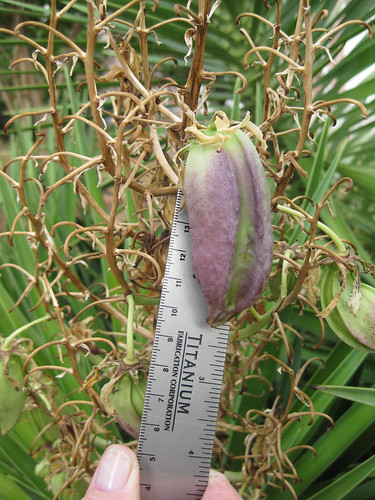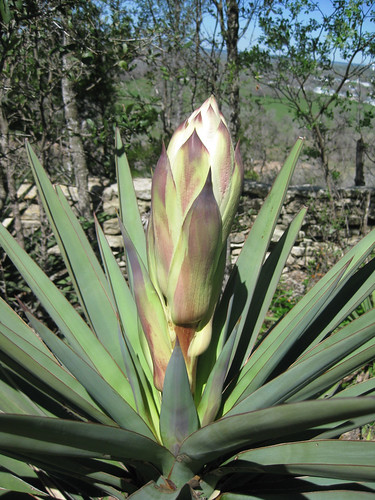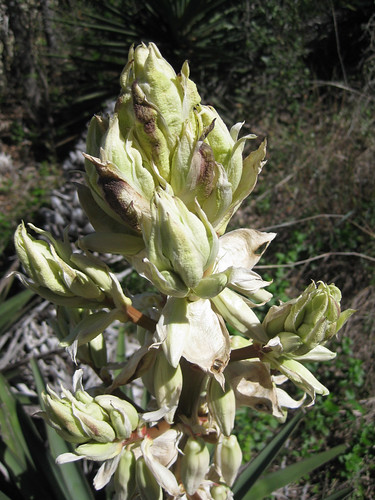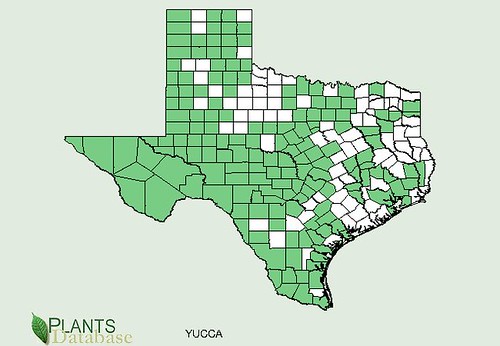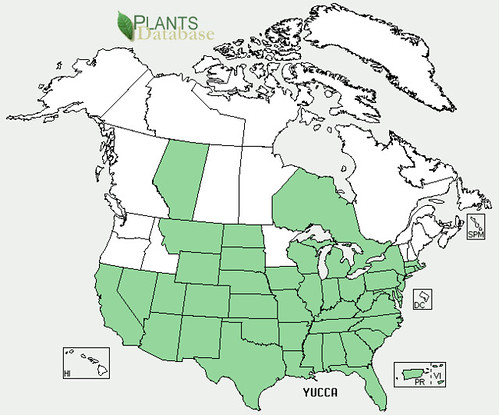Scientific name: Malvaviscus arboreus
Abundance: common
What: flowers, fruit, young leaves
How: Flowers and young leaves raw or cooked; flowers can make pink lemonade type drink; fruit can be made into tea or preserves.
Where: shady areas, often used in landscaping
When: Flowers can appear all year long if warm enough.
Nutritional Value: Flowers high in antioxidants; seeds are high in protein & starch; leaves high in minerals; fruit high in vitamin C
Leaf Arrangement: The leaves are arranged alternately along the stems.
Leaf Shape: The leaves are generally ovate to lanceolate, with a length ranging from 3 to 6 inches and a width of 2 to 4 inches.
Leaf Venation: The venation is palmate.
Leaf Margin: The leaf margins are typically serrated or toothed.
Leaf Color: The upper surface of the leaves is dark green, while the underside may have a lighter green color. Young leaves will be a lighter green, turning darker green as the mature.
Flower Structure: The flowers are unique, with a distinctive tubular shape resembling a Turkish fez or cap. The diameter of the flower can range from 1 to 2 inches. Each flower has five fused petals, forming the cap-like structure.
Flower Color: The flowers come in various colors, including shades of red, pink, or white.
Fruit: The fruit is a small, round capsule resembling a slightly flattened apple. The fruit easily splits along very faint seams.
Seed: Seeds are small, brown, and found within the "apples" one per segment.
Stem: The stems are generally upright and may have a reddish or green color when young and brown when older.
Hairs: The stems and leaves are covered in fine, upright hairs giving them a fuzzy texture.
Height: Turk's Cap plants typically range in height from 3 to 8 feet, depending on growing conditions and variety.
Young turk's cap leaves in the spring.
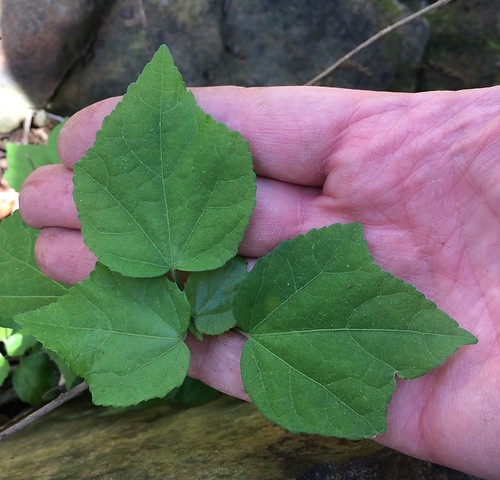

Turk's Cap shrub/bush in the summer and already flowering.

Close-up of Turk's Cap flower.
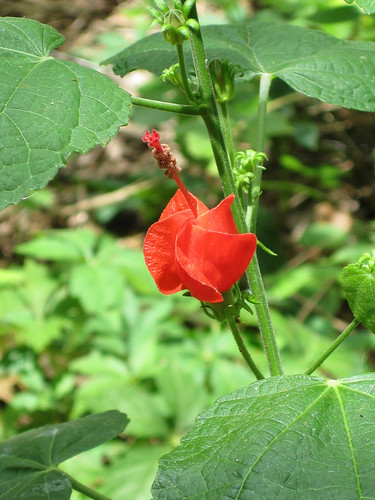
Close-up of Turk's cap flower.
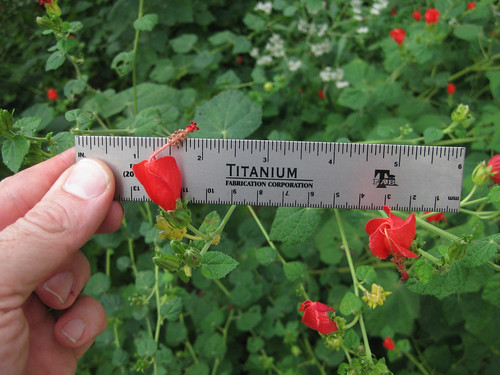
Close-up of fruit.
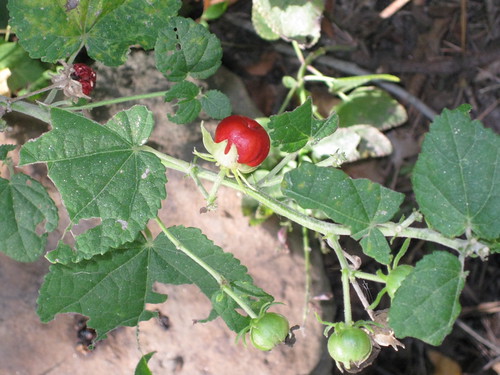

Pancakes with Turk's Cap flowers are delicious!

Texas distribution, attributed to U. S. Department of Agriculture. The marked counties are guidelines only. Plants may appear in other counties, especially if used in landscaping.
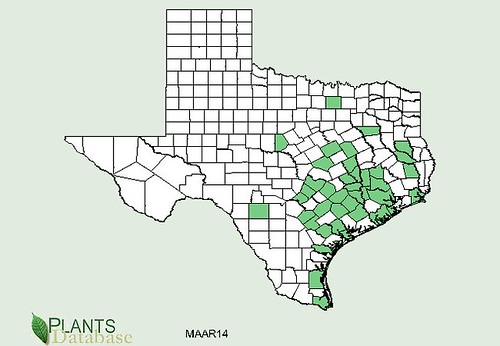
North American distribution, attributed to U. S. Department of Agriculture.

It's hard to miss Turk's Cap shrubs in the summer. Their multitude of bright read, uniquely-shaped flowers set against dark green foliage draw not just the human eye but also many butterflies and hummingbirds. These native mallows, related to hibiscus, okra, and cotton thrive across Texas due to their ability to handle shade or sun, wet or dry soil, heavy clay or sandy ground, though they prefer well drained soil with only partial sun exposure. In full sun they stay closer to the grown and spread out to end up looking "leggy". In ideal conditions of partial sun and well drained but moist soil they grow into thick, beautiful shrubs five to six feet tall. With fall's cool weather Turk's Cap loses its leaves and remains bare through the winter. Come spring light green, velvety leaves appear which grow larger, darker green, and rough in texture. By late spring/early summer the strange, rolled flowers appear with the single "antenna" sticking out the center. These flowers eventually give way to small, dark-red fruit at the end of summer.
Turk's Cap are a wonderful source of foods. The young, tender leaves can be used like spinach but cook them to soften their texture. Steaming, sautéing, boiling, or stir-frying are all good ways to cook these leaves. Actually, boiling is a terrible way to cook just about any leafy green but so be it.
The flowers are also wonderful raw, tasting like honeysuckle. The flowers are loaded with nectar at mid-morning and again in mid-afternoon. Watch the hummingbirds, they'll often swarm the plant when the flowers are at their sweetest. These flowers can also be used either fresh or dried to make tea.
The fruit is ripe when it is dark reddish-orange with no white skin present. These fruit taste like apples but with very little tartness, mainly just a light sweetness. They and their seeds can be eaten raw though the seeds are better if lightly toasted. The berries can also be made into jelly, jam, wine, or dehydrated.
While not edible, the bark (both inner and outer) can be used to make a decent cordage. Stripping the bark will usually kill the plant so save this for emergency situations.
Buy my book! Outdoor Adventure Guides Foraging covers 70 of North America's tastiest and easy to find wild edibles shown with the same big pictures as here on the Foraging Texas website.
